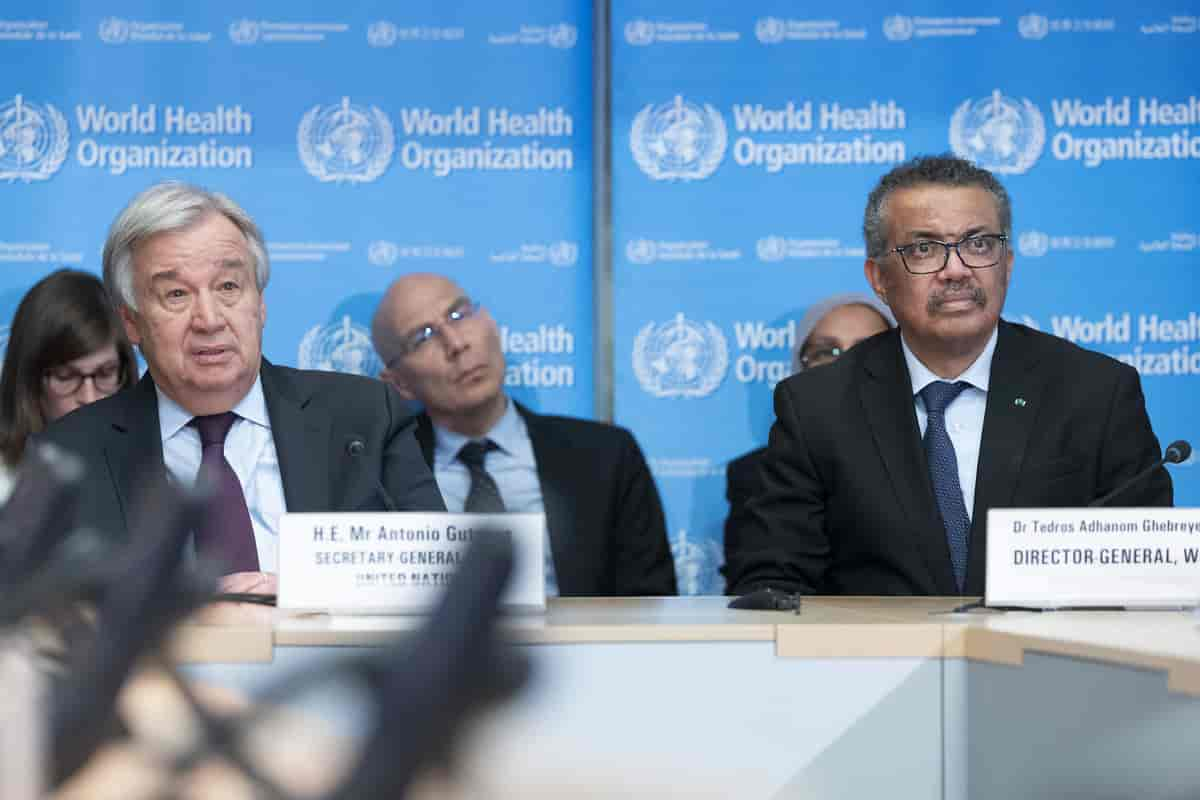
UNMASKING THE MASK CONSPIRACY
The Mask Conspiracy: Was WHO’s content promoting wearing masks?
During the COVID-19 pandemic, all eyes and ears of the public went towards reliable resources, seeking the right information about this pandemic. Amidst the flood of fake news and unreliable info filling the news outlets, the World Health Organisation (WHO) was the one “sought-after” source globally for COVID-19 info: what it is about, how big of a threat it is, and how to deal with it on a personal level and state-wide. However, a lot of criticism was addressed at WHO for some controversy related to the accuracy of information shared through its media outlets about the pandemic. While it was suggested that some WHO (and CDC) personnel advised against purchasing and using masks at the beginning of the pandemic, others went further in their conspiracy theory to say that the WHO is itself involved in misinforming the public about COVID-19 and helping a big “pandemic scheme” to roll out. Consult upgrades took a look at the contents of WHO’s communication, analysed them below.
In Brief:
- WHO’s failed to adequately communicate about the importance of wearing masks in controlling the spread of COVID-19 in its Twitter content and Weekly Operational Reports
- WHO’s Twitter content reflects anger, sadness and more assertion
- WHO’s Weekly Report show lesser sense of achievement and power compared to Twitter content
The WHO is a specialised agency of the United Nations which is responsible for international public health. Established in 1948, WHO’s mandate is to advocate healthcare internationally, monitor and report on risks, coordinate responses to emergencies, and overall promote health as part of well-being. While the achievements of WHO in eradicating diseases and improving public health are too many to count, the COVID-19 pandemic proved to draw criticism to the organisation in relation to its management of the pandemic. The Trump administration, for example, stopped funding the WHO for “severely mismanaging and covering up the spread of the coronavirus.” (New York Times 2020).
For this analysis, we retrieved WHO’s tweets, dating back to Aug 2020, and WHO’s Weekly Updates (Epidemiological and Operational) with a total of 24 reports.
After compiling the data, we applied our own methodology in analysing it. Consult Upgrade’s methodology is a set of unique innovative data processes in which we apply quantitative and qualitative analyses technique to the aggregated data, informed and guided by a custom-made pragmatic, linguistic and psycholinguistic coding framework
THE FINDINGS:
Each of data sets provided key insights and highlights about the frequency of advocating wearing “masks” and some interesting trends with regards to how the two different corpora reflected some discrepancies and differences in personal traits and emotions they denoted.
Frequency: The Mask of WHO
When it comes to the collocation, word combinations, and frequency of using the word “mask” in content, one would argue that this word must be quite frequently used in content in order to fulfil the mandate of raising the awareness of the importance of using masks to limit the spread of COVID-19. Unfortunately, the analysis came with surprisingly negative results: the lemma “mask” (in all forms) came with an extremely low frequency in the content of the WHO. 0.04% in WHO’s weekly reports, and 0.08% in their tweets since August 2020 to March 2021. No one would imagine that “Cervical cancer” would appear more than the word “mask” in WHO’s tweets; and with almost the same frequency of the word “UNICEF” in WHO’s weekly reports. Funnily enough, these weekly reports even had the adjective “inconclusive” to be the most adjective predicating the noun “mask”! The word “Distancing” was more modified with “maintain” in weekly reports compared to tweets.
The charts below show the word cloud for each data set & the word combinations for the keywords “mask” & “distancing”.
Emotions & Sentiments: A Tale of Two Contents
When comparing the two data sets compiled from the WHO’s tweets and reports, they came with quite interesting yet contrasting trends. One would think that the discrepancies should be minimal for one organisation, however, results came reflecting a lack of emotional connection and admiration in WHO’s twitter content. Interestingly, it showed rather more anger and sadness compared to its counterpart, the WHO’s weekly reports. Yet, the WHO managed to reflect more sense of achievement and power through their Twitter content more than their weekly reports. On the other hand, the weekly reports showed, strangely enough, lesser assertion, organisation, and even lesser emotional awareness, than the tweets.
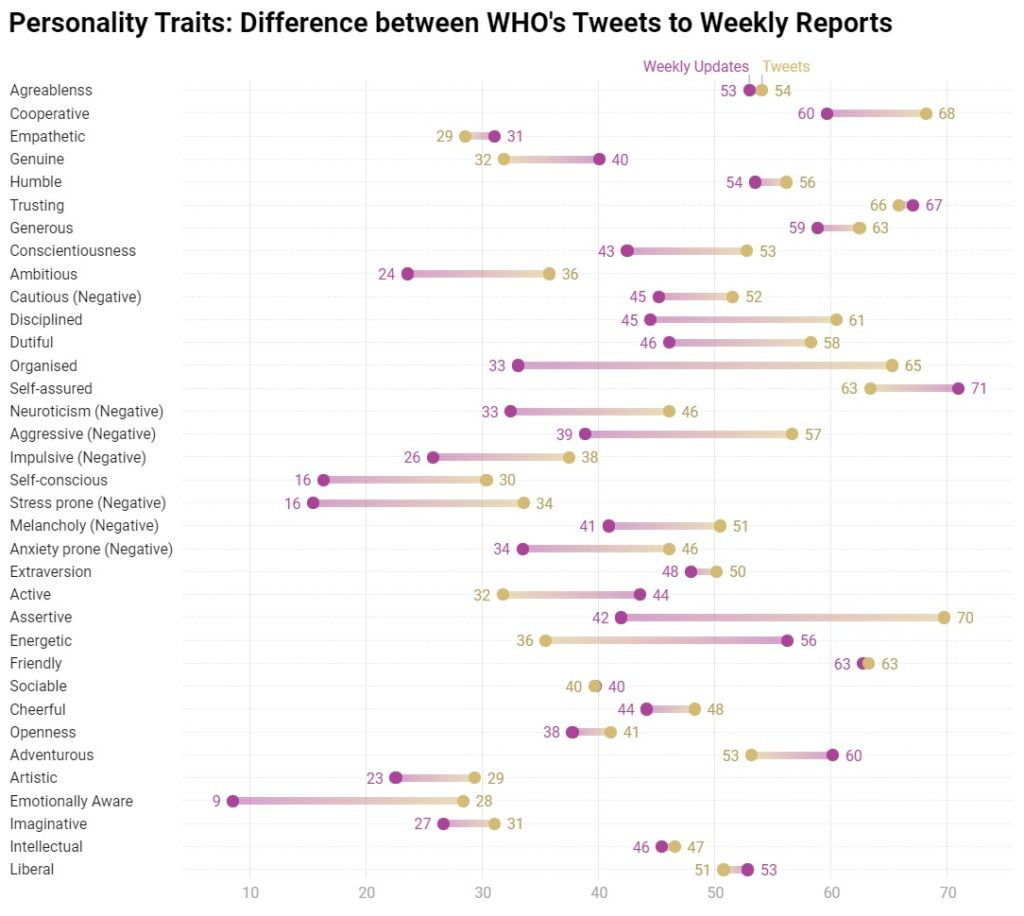
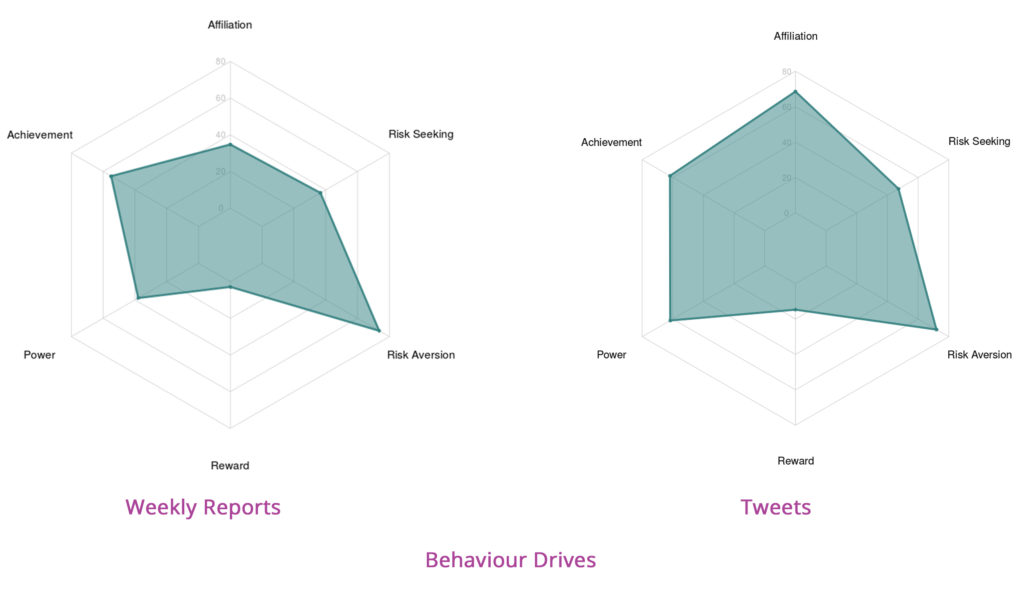
References:
“Coronavirus Updates: Trump Halts U.S. Funding of World Health Organization”, New York Times, 14 April 2020, https://www.nytimes.com/2020/04/14/us/coronavirus-updates.html


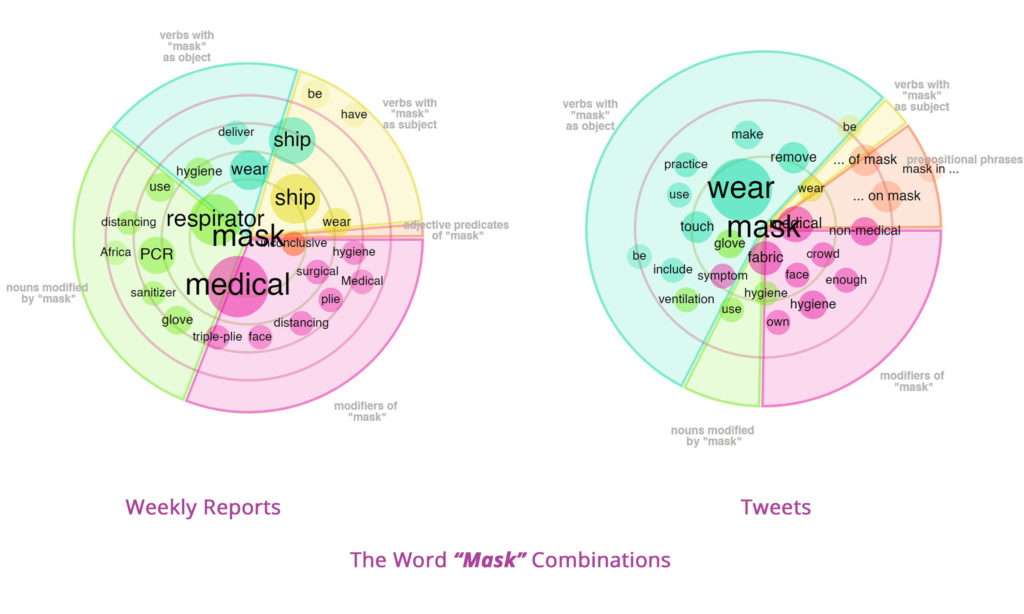
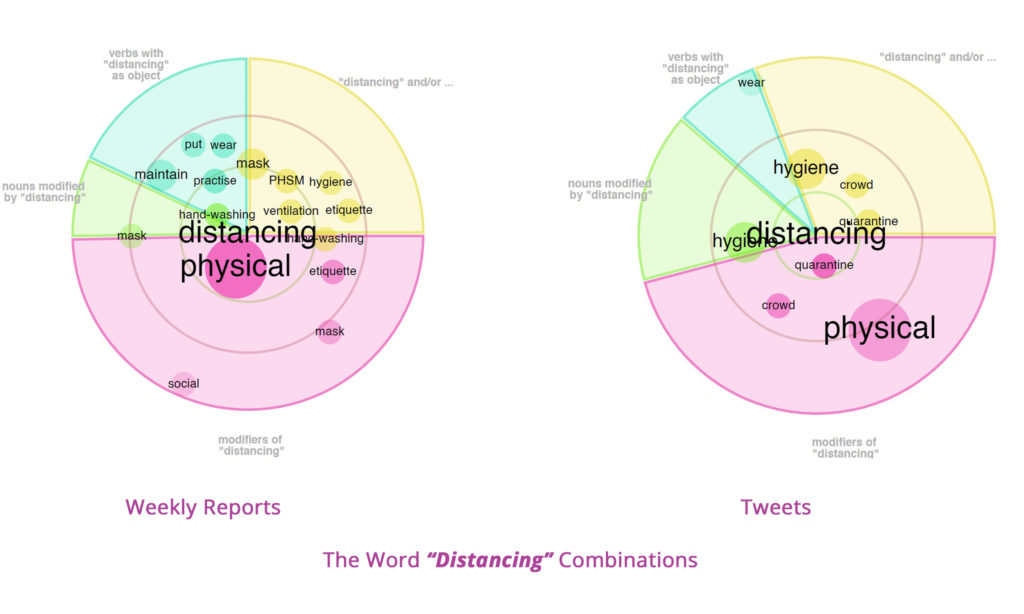
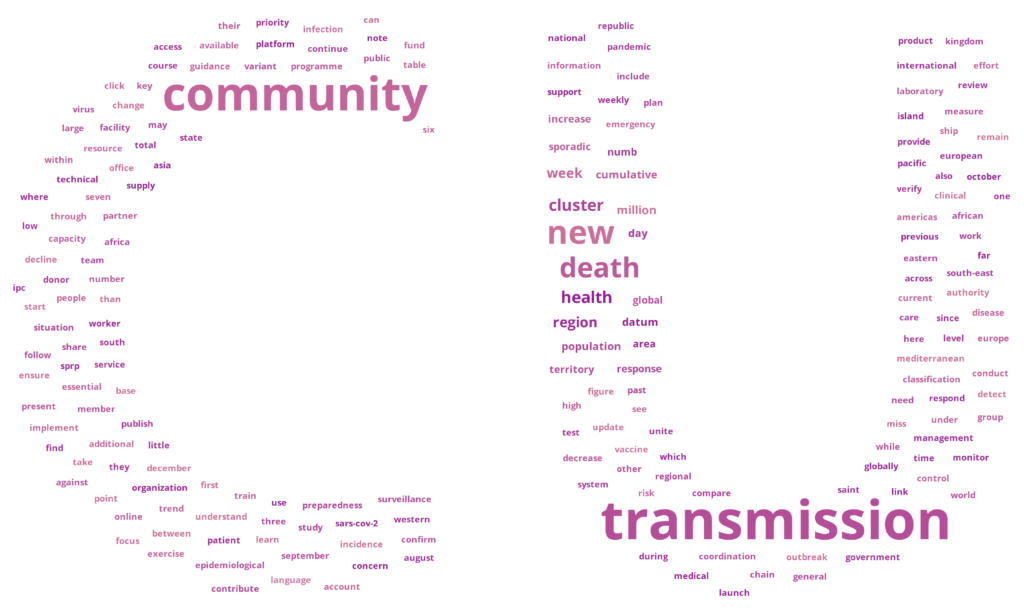
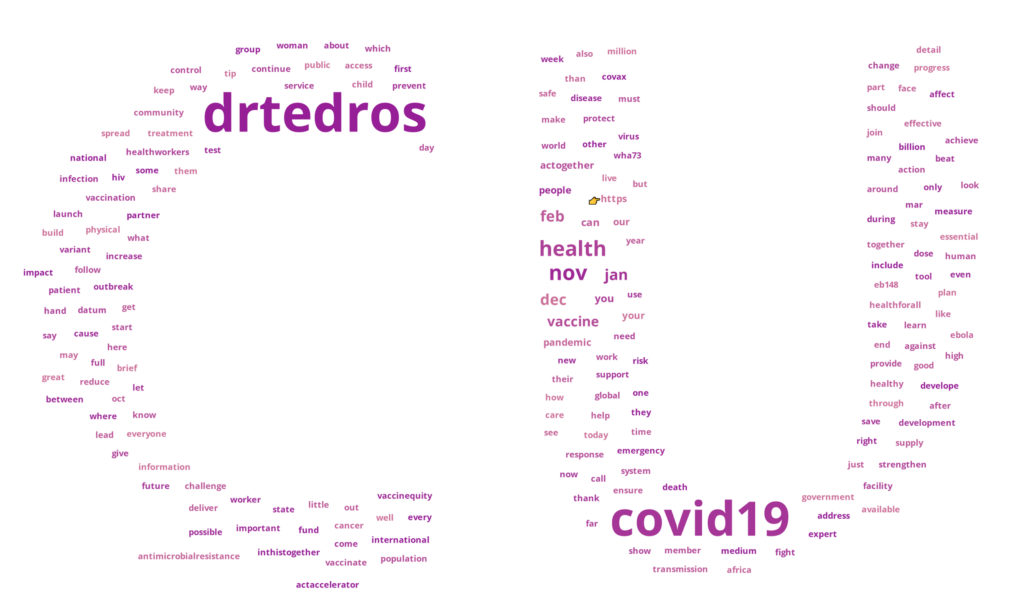
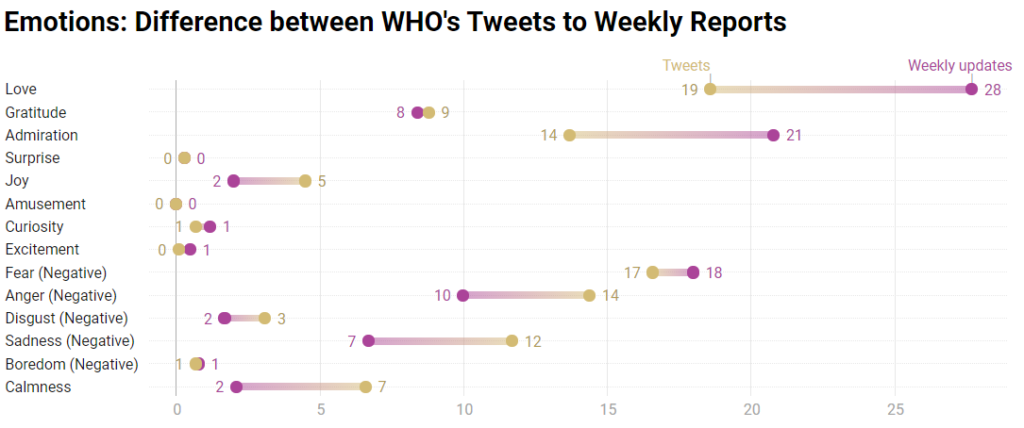
Comments are closed